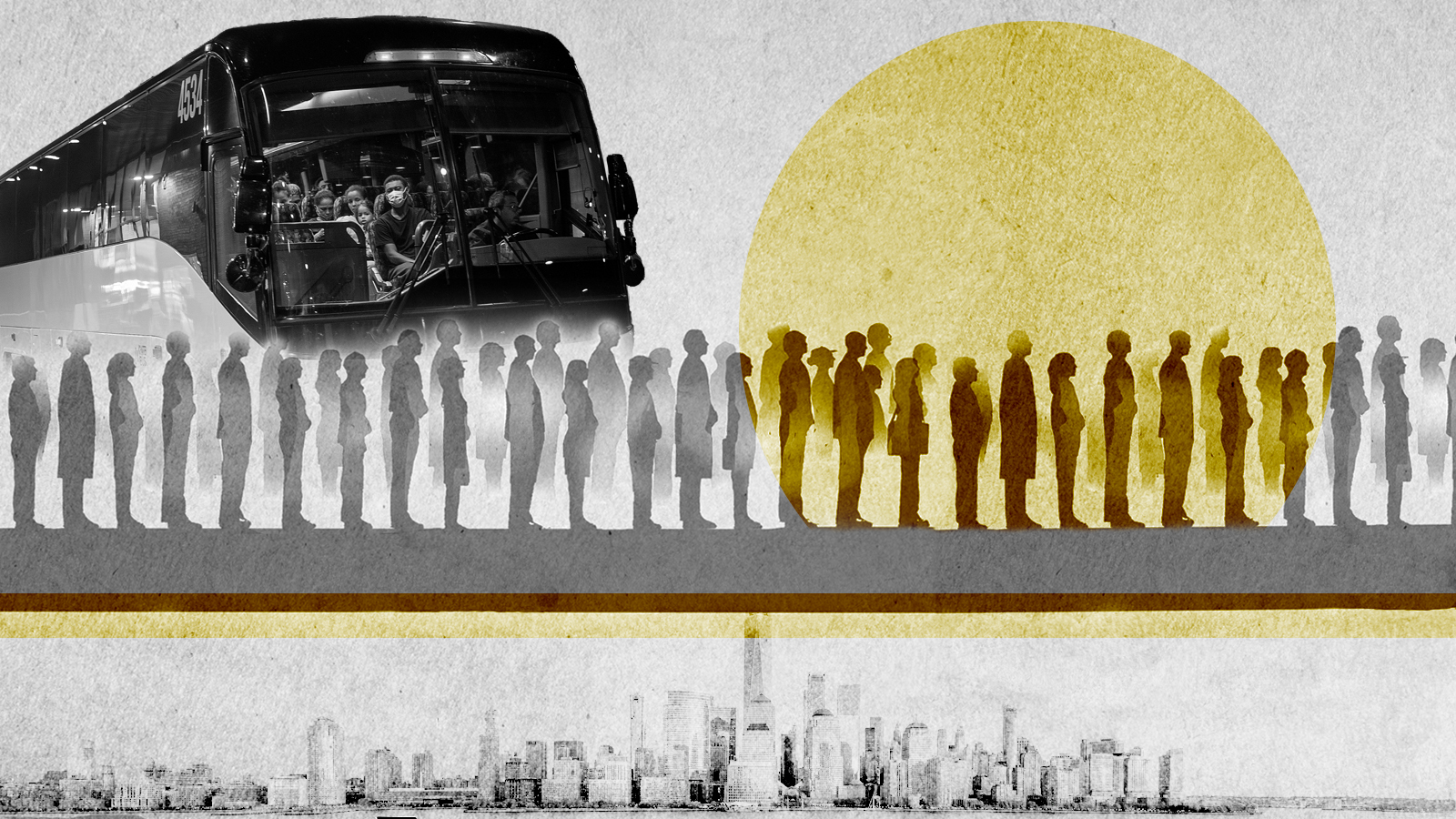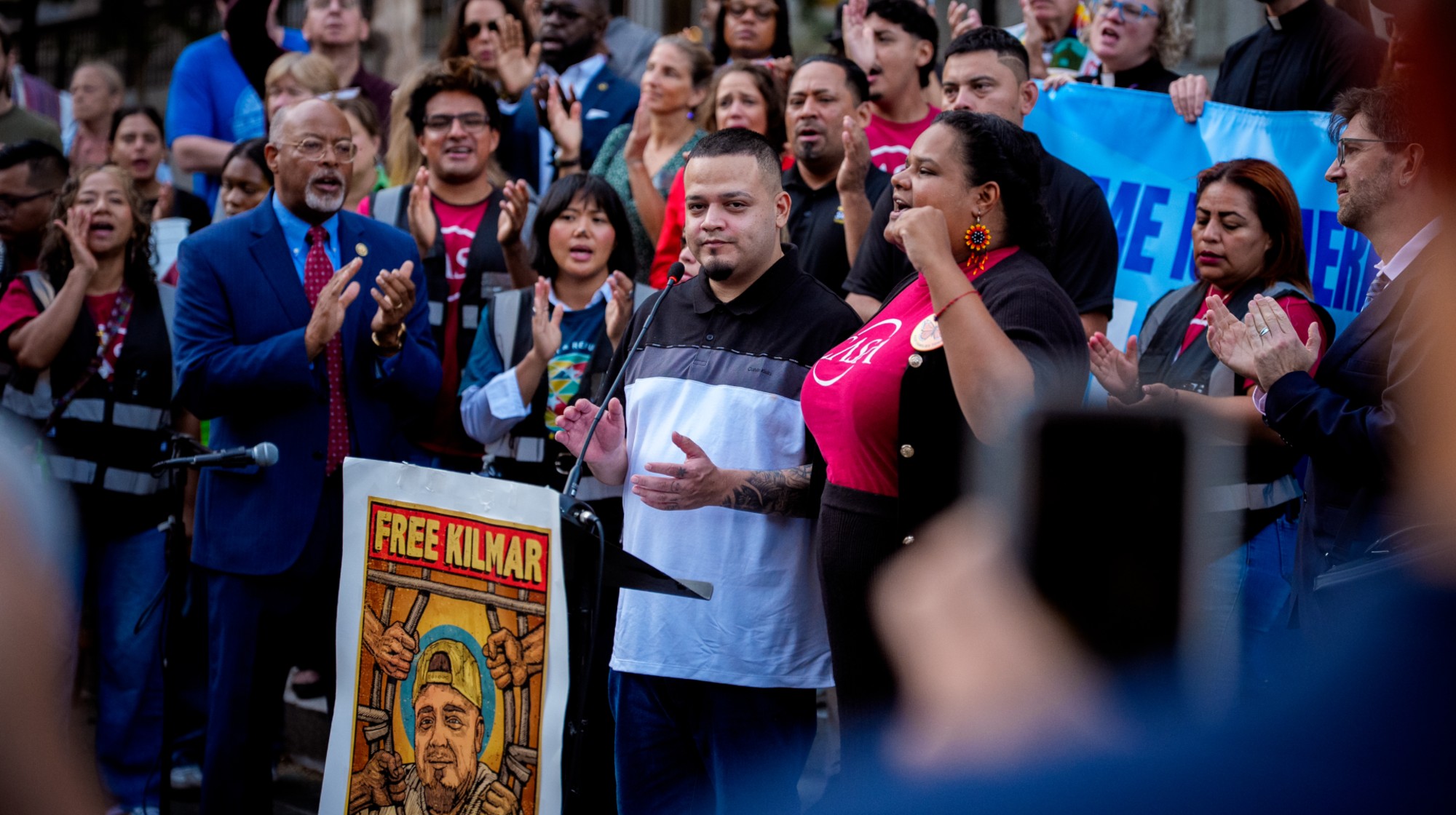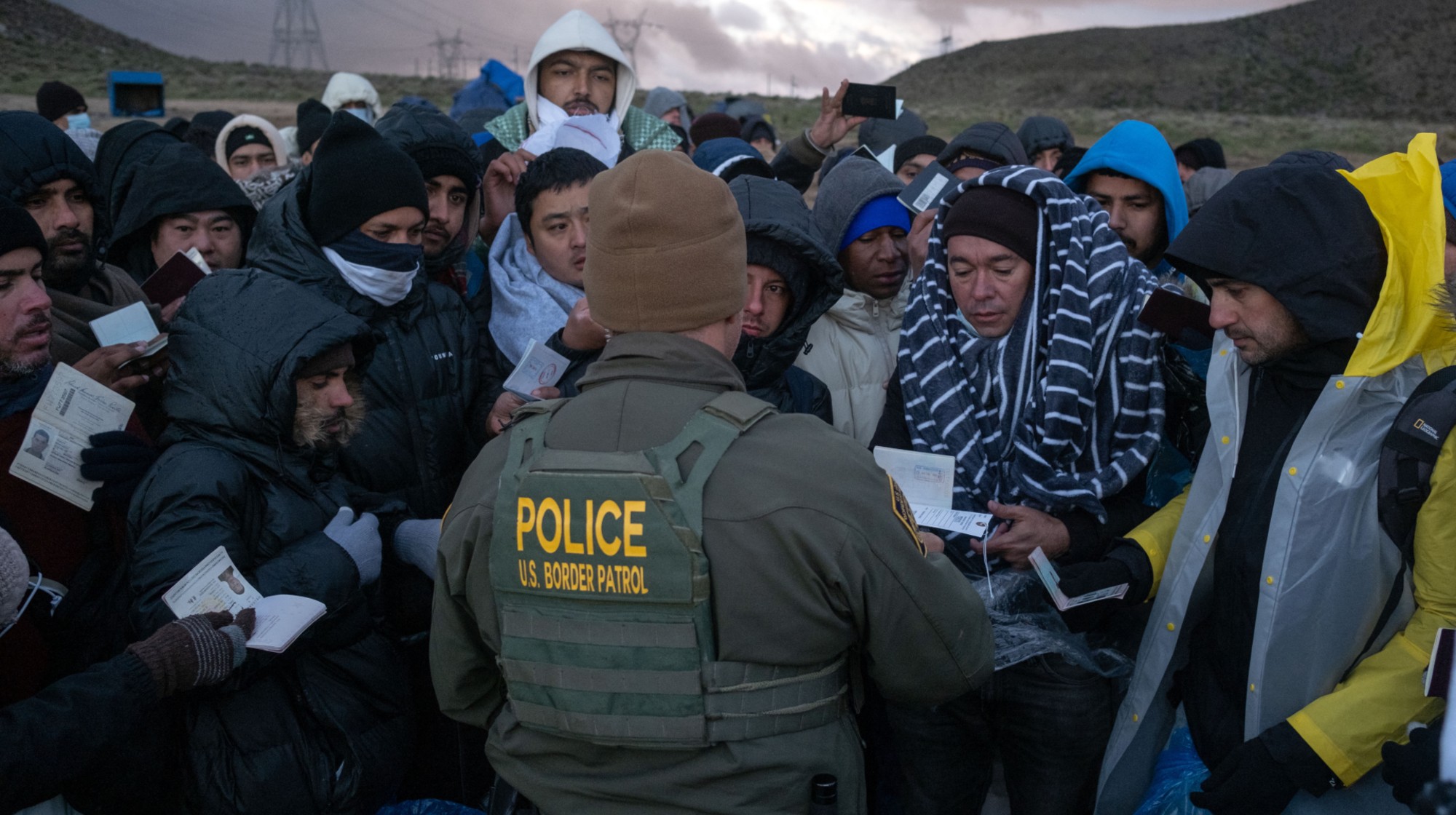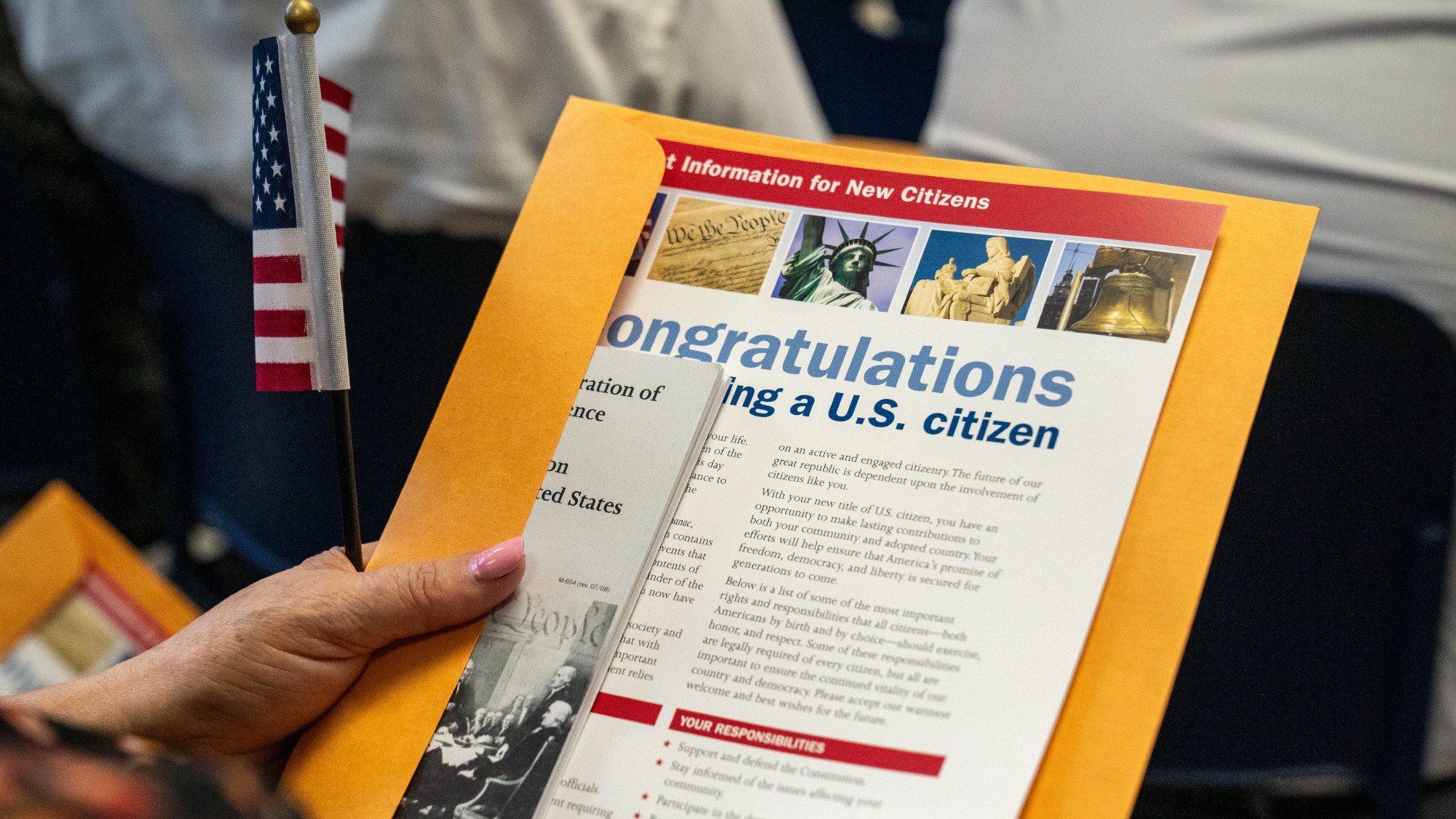The current state of American sanctuary cities
Sanctuary cities are buckling under the pressure of the influx of asylum-seekers


Immigration continues to be one of the most polarizing issues in the U.S. The ongoing struggle between border states like Texas and Florida and sanctuary cities across the country embodies that tension. Since last year, thousands of people who showed up at the border seeking refuge have been mass relocated to sanctuary cities to protest the Biden administration's immigration policies. Leaders in these cities have begged the federal government to step in as the influx of immigrants has outpaced the resources they have to offer.
Recently the spotlight has been on New York City, where the situation has become so dire Mayor Eric Adams declared there was "no more room." The city's "descent from a place that was managing to keep up, just barely, with a ceaseless flow of asylum seekers to a place that had declared defeat was sudden," The New York Times wrote. "From this moment on, it's downhill," Adams said at a City Hall news conference last week. As the crisis in NYC plays out, people are looking at it as an example of how sanctuary cities handle the influx of asylum seekers.
What are sanctuary cities?
Currently, sanctuary cities or states are communities with policies that limit local law enforcement's cooperation with federal authorities' efforts to deport immigrants. For the past few decades, "U.S. sanctuary city policies have been chiefly about welcoming immigrants whom the federal government has refused to grant humanitarian protection," The Washington Post explained.
The Week
Escape your echo chamber. Get the facts behind the news, plus analysis from multiple perspectives.

Sign up for The Week's Free Newsletters
From our morning news briefing to a weekly Good News Newsletter, get the best of The Week delivered directly to your inbox.
From our morning news briefing to a weekly Good News Newsletter, get the best of The Week delivered directly to your inbox.
In the 1980s, a wave of cities and towns officially declared themselves sanctuary cities and adopted policies restricting cooperation with federal immigration enforcement. Los Angeles was the first city to offer this sanctuary for people fleeing civil wars in El Salvador and Guatemala in 1979, per the Post. Other large cities and college towns followed suit and provided access to local services like schools and healthcare, regardless of immigration status. A clause of the Illegal Immigration Reform and Immigrant Responsibility Act of 1996 "played an outsize role in producing our contemporary landscape of sanctuary cities and anti-immigrant jurisdictions," the Post added. The 287g clause allowed U.S. Immigration and Customs Enforcement (ICE) authorities to deputize local police to help detain and deport illegal immigrants. Many cities have designated themselves as sanctuary cities in response to the clause, making them safe havens for asylum seekers.
How are they handling the influx of asylum seekers?
Since last year, thousands of migrants have been relocated from the border in Texas, Florida, and Arizona to larger sanctuary cities like New York, Denver, Chicago, and Washington D.C. Republican governors have sent busloads and planes full of migrants to these cities to protest the federal government's lax immigration enforcement and the burden being shouldered by border cities. Most relocations have come as a complete surprise for the receiving cities, and they are struggling to keep up with the influx. Mayors from the cities have called on the federal government to help mitigate the crisis, especially leading to the end of Title 42, the pandemic-era asylum regulation that expired in May. With even more migrants projected to enter the country, the cities worried the crisis would put more strain on their resources and budgets.
Before Mayor Adams announced NYC had run out of room, he'd repeatedly asked for government assistance and better communication from the states sending the buses. Migrants had begun to sleep on the streets as placement in the city's shelter system became scarce. The city has spent millions of dollars so far securing housing and providing services to migrants from all over the world. There has been a steady flow of incoming migrants for the past year or so, "nearly doubling the city's homeless population in one huge spasm," the Times reported. Over 100,000 people currently live in shelters throughout the city. The city has tried to find several resolutions to the lack of housing, including taking over entire hotels in Manhattan and building and promptly shutting down temporary shelters.
Denver officials announced in May that they would only allow migrants with formal applications to remain in the U.S. in their emergency shelters. The city has struggled to keep up with the influx of asylum seekers, having spent $20 million sheltering and supporting 12,700 migrants since December, per Axios. The shift could be attributed to a "lack of funding, lack of policy, lack of guidance from our federal government to be able to respond to this crisis appropriately," Victoria Aguilar, a spokeswoman for Denver Human Services, told the Associated Press. Last month the outgoing mayor, Michael Hancock, announced that his administration was no longer moving forward with a $40 million contract with a private company to oversee the city's migrant shelter system, Denverite reported.
A free daily email with the biggest news stories of the day – and the best features from TheWeek.com
Chicago is another sanctuary city feeling the strain for resources for migrants arriving there. At one point, migrants waiting for space in city shelters resorted to sleeping on the floors of local police stations and the airport. The city's shelter system was "over capacity," in May, according to a statement from Brandie Knazze, commissioner of the Chicago Department of Family and Support Services, to city officials. "Make no mistake, we are in a surge, and things have yet to peak," he added. While the migrants staying in police stations have since been relocated to temporary shelters, Chicago officials continue to pressure the federal government to mitigate the ongoing crisis.
Theara Coleman has worked as a staff writer at The Week since September 2022. She frequently writes about technology, education, literature and general news. She was previously a contributing writer and assistant editor at Honeysuckle Magazine, where she covered racial politics and cannabis industry news.
-
 Political cartoons for December 20
Political cartoons for December 20Cartoons Saturday’s political cartoons include drowning rats, the ACA, and more
-
 5 fairly vain cartoons about Vanity Fair’s interviews with Susie Wiles
5 fairly vain cartoons about Vanity Fair’s interviews with Susie WilesCartoon Artists take on demolition derby, alcoholic personality, and more
-
 Joanna Trollope: novelist who had a No. 1 bestseller with The Rector’s Wife
Joanna Trollope: novelist who had a No. 1 bestseller with The Rector’s WifeIn the Spotlight Trollope found fame with intelligent novels about the dramas and dilemmas of modern women
-
 Homeland Security Secretary Kristi Noem might not be long for Trumpland
Homeland Security Secretary Kristi Noem might not be long for TrumplandIN THE SPOTLIGHT She has been one of the most visible and vocal architects of Trump’s anti-immigration efforts, even as her own star risks fading
-
 Abrego García freed from jail on judge’s order
Abrego García freed from jail on judge’s orderSpeed Read The wrongfully deported man has been released from an ICE detention center
-
 $1M ‘Trump Gold Card’ goes live amid travel rule furor
$1M ‘Trump Gold Card’ goes live amid travel rule furorSpeed Read The new gold card visa offers an expedited path to citizenship in exchange for $1 million
-
 ECHR: is Europe about to break with convention?
ECHR: is Europe about to break with convention?Today's Big Question European leaders to look at updating the 75-year-old treaty to help tackle the continent’s migrant wave
-
 The Trump administration says it deports dangerous criminals. ICE data tells a different story.
The Trump administration says it deports dangerous criminals. ICE data tells a different story.IN THE SPOTLIGHT Arrest data points to an inconvenient truth for the White House’s ongoing deportation agenda
-
 Trump tightens restrictions for work visas
Trump tightens restrictions for work visasSpeed Read The length of work permits for asylum seekers and refugees has been shortened from five years to 18 months
-
 Why do Republicans fear immigration raids in North Carolina?
Why do Republicans fear immigration raids in North Carolina?Today’s Big Question Trump’s aggressive enforcement sparks backlash worries
-
 Memo signals Trump review of 233k refugees
Memo signals Trump review of 233k refugeesSpeed Read The memo also ordered all green card applications for the refugees to be halted
